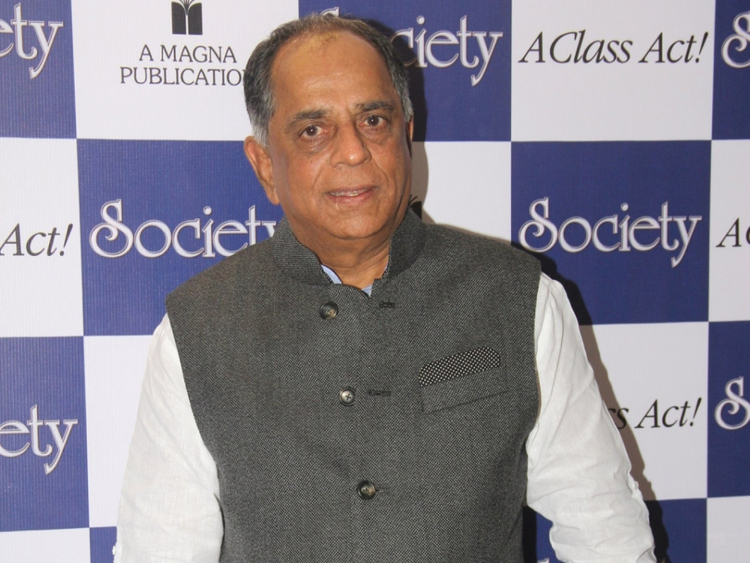
Go to see a movie in India nowadays, and despite the elaborate musical numbers and extravagant sets, you may well find the content pretty bland. The reason is simple: The industry is reeling under severe censorship. This flies in the face of India’s democratic tradition — and it needs to stop.
Censorship has a peculiar status in India. When it comes to news media, print or broadcast, censorship is utterly unacceptable, even unthinkable. Yet, all films produced by India’s prolific film industry must be reviewed and approved by the Central Board of Film Certification, which has the authority to demand that scenes be cut or language changed before a film can be screened publicly.
The discrepancy is a matter of elitism. Decades ago, the supposed guardians of India’s public morals decided that those with the education and good taste to read a newspaper can handle its contents, but ordinary people seeking diversion must be protected from the pernicious effects of the “wrong” kinds of entertainment.
To be sure, violence often makes it past the censors. But sexuality is another story. While images of nudity appear in urban glossy magazines to titillate the bourgeoisie, city-based censors make sure that villagers do not see a woman’s body on a movie screen. Until recently, not even a kiss could appear in a Bollywood movie; instead, as the man and woman tilted their heads towards each other, the camera would pan to two birds pecking or two flowers brushing together.
Other perceived threats to Indian culture include offensive language and unconventional views, especially on socially and politically sensitive topics. Sentiments that we take for granted in the opinion pages of newspapers rarely find their way into Bollywood blockbusters.
Even on television, entertainment is subject to rules that don’t apply to news. A fashion show, for example, would be rigorously reviewed to ensure that no non-conformist attire that shocks the sensibilities of Indian culture’s custodians makes it on screen. Fashion channels have been taken off the air for showing models in revealing clothes.
India’s film industry has long suffered stoically under the pressure of the paternalistic censors. But it has never had it so bad as it does under the current chief censor, Pahlaj Nihalani.
To get an idea of the scale of the Nihalani-led review board’s moral policing, a kiss in the James Bond movie Spectre was deemed too long (and therefore trimmed). A scene in the superhero hit Deadpool got the same treatment.
Last month, Nihalani’s reign of cultural terror came to a head, with the review board demanding 72 cuts from the big-budget Bollywood film Udta Punjab (Flying Punjab), a gritty tale centred on the drug culture that is prevalent in the eponymous northwestern Indian state. That decision was, it seems, entirely political.
Punjab is controlled by India’s governing Bharatiya Janata Party (BJP), in alliance with a powerful regional party, the Shiromani Akali Dal, neither of which was pleased by the film’s portrayal of the state they rule. And, unsurprisingly, the cuts largely targeted scenes and dialogue highlighting the government’s failure to curb — and some politicians’ complicity in promoting — Punjab’s widespread drug abuse. To add insult to injury, the censors asked the filmmakers to remove all 94 references to Punjab in the film, including its title.
“All the characters are negative,” Nihalani reportedly said. But when he declared that the film would “hurt the whole community,” what he really meant was that it would hurt the BJP and its allies. (Nihalani, a BJP appointee, had made a campaign video for Prime Minister Narendra Modi.) The fact that the cuts would have gutted the film — as if Woody Allen were forced to remove Barcelona from Vicky Cristina Barcelona — was apparently irrelevant.
But Nihalani failed to reckon with Udta Punjab’s feisty producer, Anurag Kashyap, a luminary of Bollywood’s avant-garde. Kashyap launched a Twitter attack on Nihalani, calling him a “dictatorial man” and an “oligarch” — and not stopping there. “I always wondered what it felt like to live in North Korea,” Kashyap tweeted. “Now I don’t even need to catch a plane.”
Kashyap continued his resistance offline, taking the almost unprecedented step of suing the review board — and winning. The Mumbai High Court ordered that the film be shown with only one cut. It was promptly released and has since broken India’s box-office records.
The offensive by Kashyap may have fired up an already frustrated film industry, which is united in wanting Nihalani gone. Even one of Nihalani’s fellow review-board members, filmmaker Ashoke Pandit, accused him of undermining the body’s credibility and even of threatening to “Talibanise” the industry.
But even if Nihalani is ousted, and the review board goes back to its old ways, India will still be a modern democracy engaged in the thoroughly undemocratic practice of limiting freedom of speech, if only in the film industry. A government-appointed committee recently recommended that the board be confined to certification (or issuing audience ratings), with the power to censor content only in rare circumstances. The recommendations should be adopted (though the report’s approval of full bans of films by the board is unacceptable).
The practice of film censorship is yet another relic of a bygone colonial era, the values of which Indians have too readily internalised. Nearly seven decades after Independence, Indians must recognise that their democracy is mature enough to end censorship.
— Project Syndicate, 2016
Shashi Tharoor, a former UN under-secretary-general and former Indian minister of state for External Affairs and minister of state for Human Resources Development, is currently chairman of the Parliamentary Standing Committee on External Affairs and an MP for the Indian National Congress.










